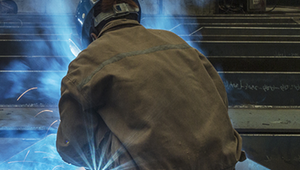
Why Manufacturers Are Having to Reinvent Their Customer Relationships

Due to ground-breaking developments in science and technology, the manufacturing industry is going through changes no less dramatic than the industrial revolution. These have transformed production capabilities and demanded new skills from workforce's, while creating new needs and expectations from manufacturers’ business customers.
Manufacturers have needed to invest heavily to keep up. Technologies such as Artificial Intelligence (AI), machine decision-making and smart materials have opened the door to a world where physical and virtual realities exist as one. This has made it possible to create dynamic, self-re configuring and re-organising manufacturing systems that can produce massive product variations.
A good example of this change is Ohio’s ChemStation; a market leading manufacturer of industrial soaps. ChemStation has moved from manufacturing fixed products to custom products that are based on business customers use and need. Product use is monitored and adjusted in real-time and replenished at customers facilities in reusable containers using ‘just in time’ telemetry.
The rapid roll out of these advanced manufacturing technologies means that workforce skills needed to change too. There is a decreasing need for manual work, but an increasing one for engineering and technical expertise. Alongside this, manufacturers need more creative, communication and relationship roles that can help them drive a more innovative and flexible production process, and gain a better understanding of their customers. They need to listen to their business customers more and sell less to build relationships that create mutual value over time. In many cases this has led to manufacturers spending more time with their business customers and actually involving them in product and manufacturing innovation.
“Amongst this dramatic change, there are powerful lessons about how manufacturers’ can evolve the role of their workforce.”
Polaris Industries, a Minnesota-based manufacturer of commercial and consumer all-terrain vehicles, uses a crowd sourcing platform to discover and deliver breakthrough products. The company’s approach to innovation had been typically top-down before it turned to using social platforms to innovate with its customers. Polaris found that when it turned to a crowd-sourcing approach, they achieved an 80% reduction in the time it takes to discover, assess, and execute new ideas. Tapping into the internal and business customer crowd has energised Polaris’ R&D process and created three of its best-selling vehicles. It’s also reduced time-to-market dramatically, which has given the company a distinct advantage in a highly competitive market.
And it’s not just small manufacturers doing this. Digital and industrial giant, General Electric seems to have found a solution with Genius Link, a crowd-powered open innovation platform run by GE Fuse. Fuse harnesses the knowledge and experience of a global community of engineers to help GE customers solve major product challenges.
“The ultimate goal is to accelerate product and technology development,” says Amelia Gandara, Community Leader at Fuse. “This is truly a community of curious minds eager to apply their technical skills to a project that challenges them as engineers, scientists, and problem solvers.”
Amongst this dramatic change, there are powerful lessons about how manufacturers’ can evolve the role of their workforce, and partner with business customers to turn these new production capabilities into mutually beneficial partnerships.
As the world’s leading specialist B2B agency, we see these changes as a great opportunity for manufacturers to rethink their marketing communications. It’s no longer enough for manufacturers to focus solely on acquisition and retention of their business customers. Instead, we believe it’s essential for businesses to build their brands from the inside out, which means having an integrated approach to communications; one that brings workforce's and customers closer together.
We have developed a proprietary approach to building brands from the inside out by actively involving and engaging customers with a brand. This means developing new communication and collaboration platforms between employees and business customers, and drawing on different data sources and listening tools to better understand their needs.










